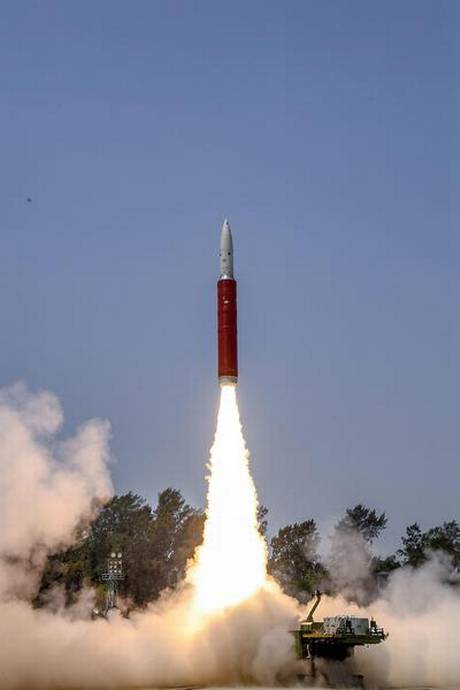Washington: The Pentagon has strongly denied the reports that the US spied on India’s anti-satellite (ASAT) missile test by sending a reconnaissance aircraft from its base in Diego Garcia in the Indian Ocean to monitor the development. It, however, said the United States was aware about India’s first test-fire of an anti-satellite missile.
“No US assets were spying on India. In fact, the US continues to expand its enduring partnership with India, resulting in enhanced interoperability and stronger economic ties,” US Defense Department spokesperson Lt Col David W Eastburn told PTI.
Aircraft Spots, which monitors military air movements, had said that a US Air Force’s reconnaissance aircraft from its base in Diego Garcia went “for a mission in the Bay of Bengal to monitor India’s anti-satellite missile test.” This was interpreted by many that the US spied on Indian ASAT test.
“I don’t think that it implies coordination between India and the US,” astronomer Jonathan McDowell from the Harvard-Smithsonian Center for Astrophysics told PTI on the Aircraft Spots report.
“This implies that the US intelligence community was aware of the test in advance because to some extent they’re spying on India,” he alleged.
“It would be surprising if the US were not detecting or observing the launch site and aware of activities preparing for the test. So one assumes that they knew it was coming,” he claimed.
McDowell, who is a staff member at the Chandra X-ray Center and author and editor of Jonathan’s Space Report, an e-mail-distributed newsletter documenting satellite launches, said he has not looked into the issue of the aircraft, but it is certainly not surprising that the US would fly a sensor aircraft to try and observe the test.
The Pentagon, however, strongly denied the spying allegation.
“It’s a relationship so strong that no topic is off limits,” Eastburn said.
Air Force Space Command Commander Lt Gen David D Thompson told lawmakers Thursday that the US was aware that India’s ASAT test was coming.
“First of all, we knew it was coming because of flight bans that India had announced and information they published previously. The launch occurred at 1.39 AM EST,” he told members of the powerful Senate Armed Services Subcommittee on Strategic Forces during a Congressional hearing.
“It was detected, characterised and reported by Air Force Missile Warning systems and Airmen at Buckley AFB. Immediately after the test, it struck the target vehicle, the Joint Space Ops Center and USAF 18 Space control Squadron began collecting information about the breakup of the vehicle,” Thompson said. US Strategic Command’s Joint Force Space Component Command (JFSCC) said 250 pieces of debris associated with the ASAT launch are being actively tracked and the international space station (ISS) was not at risk.
India Prime Minister Narendra Modi Wednesday announced that India successfully test-fired an anti-satellite missile by shooting down a live satellite, describing it as a rare achievement that puts the country in an exclusive club of space super powers. The test made India the fourth country in the world after the US, Russia and China to acquire the strategic capability to shoot down enemy satellites.
